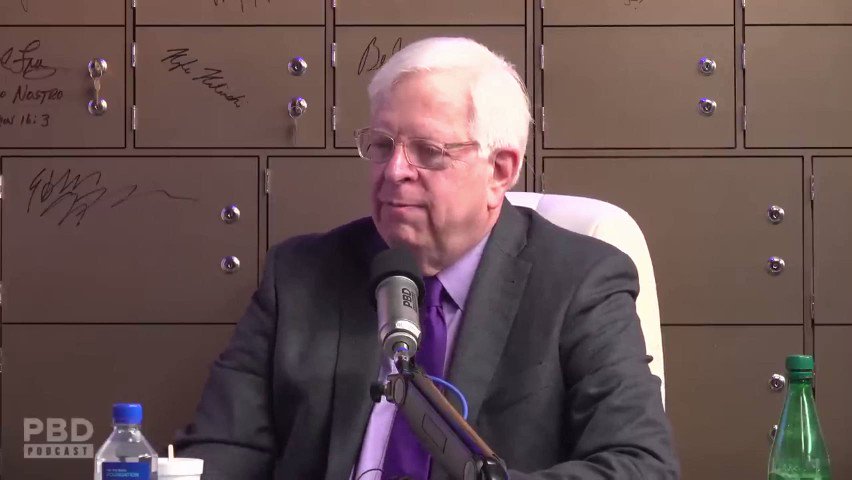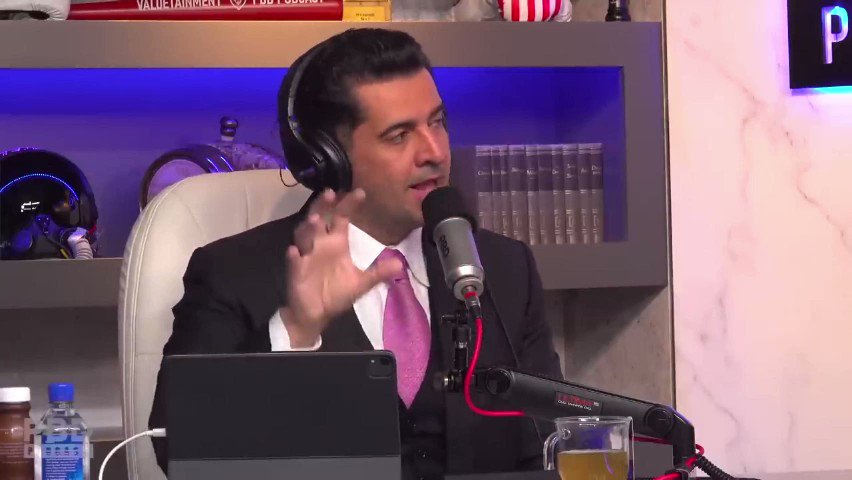Sanatan Articles
Satyaagrah
Written on
Satyaagrah
Written on
Satyaagrah
Written on
Satyaagrah
Written on
Satyaagrah
Written on
JOIN SATYAAGRAH SOCIAL MEDIA
In 1977, India let Pakistan go nuclear after Morarji Desai betrayed RAW to Zia-ul-Haq—170 nukes now target us; in 2025, Israel struck Iran’s Natanz to halt 60% enriched uranium—stay silent again, and the next nuclear crisis won’t knock, it will detonate

The global security landscape is fraught with challenges, none more pressing than preventing rogue regimes from acquiring nuclear weapons. The recent Israeli strikes on Iran’s nuclear facilities underscore the urgency of this mission, drawing parallels to a historical missed opportunity involving India, Israel, and Pakistan’s nuclear program at Kahuta. This article chronicles the events surrounding these critical moments, highlighting why the destruction of Iran’s nuclear program by the U.S. and Israel is essential for global stability, while reflecting on India’s historical missteps under Morarji Desai that allowed Pakistan to become a nuclear power.
|
In March 1977, after decades in power, the Congress Party lost for the first time. The new Janata Party was not a single ideology but a coalition of diverse groups: the Hindu nationalist Jana Sangh, the Socialists, the Jat-led Bharatiya Lok Dal, and even breakaway Congress members. At its head stood Prime Minister Morarji Desai (81)—a former Congressman, widely traveled and experienced, yet firmly fixed in his beliefs. Once seen as a potential successor to Nehru, he was later marginalized by his daughter, Indira Gandhi, and even endured incarceration during the Emergency.
Simultaneously, in Israel, Moshe Dayan stepped into the role of Foreign Minister under Prime Minister Menachem Begin (1977–1979). A veteran of the Six-Day War (1967) and Yom Kippur War (1973), he was a natural voice in efforts to counter the spread of nuclear weapons. His arrival coincided with India’s growing header of concern about Pakistan’s efforts at Kahuta—a direct response to India’s own nuclear test.
1974: India’s Nuclear Milestone and Pakistan’s Response
In May 1974, India conducted its inaugural nuclear test, named Operation Smiling Buddha. This move shook the region and effectively rattled Pakistan. Alarmed, Pakistan’s Prime Minister Zulfikar Ali Bhutto launched Project-706 (also called Project-786), beginning his country’s drive to match India’s nuclear status. At the heart of Pakistan's program was the Kahuta Research Laboratories (KRL), under Abdul Qadeer Khan, fueled by uranium-enrichment designs smuggled from the URENCO facility in the Netherlands .
1976–1977: RAW’s Covert Operations and Intelligence Gathering
India’s external intelligence unit, RAW, created under Indira Gandhi, began rigorously tracking Pakistan’s nuclear efforts. By 1977, they collected hair samples from Kahuta’s vicinity—and found radiation traces confirming enriched uranium. This proved Pakistan’s actions were not hypothetical—they were material. RAW’s special cell, known as the “Kaoboys,” had sabotage plans ready and worked closely with Israel’s Mossad, which was equally worried about an “Islamic bomb” .
1977: Morarji Desai’s Ascendancy and Ideological Shift
After its election victory, the Janata Party installed Morarji Desai as Prime Minister. A strict Gandhian, Desai distrusted RAW, believing it had been politicized under Indira Gandhi. His belief that India should not meddle in neighbors’ internal affairs led to a drastic move: he cut RAW’s budget by 30%, removed its founding chief R.N. Kao, and sidelined the next leader K. Sankaran Nair. This undermining of RAW occurred just when it was most needed.
1977: Moshe Dayan’s Secret Visit to India
“In August 1977, Israeli Defense Minister Moshe Dayan covertly traveled to India (some reports mention Kathmandu) at the invitation of Indian intelligence (RAW), proposing a joint military strike on Pakistan’s clandestine Kahuta nuclear facility, home to the Khan Research Laboratories (KRL)”
“Dayan sought refueling rights for Israeli F‑16/F‑15 jets on Indian soil to launch an airstrike on Kahuta”
“RAW had confirmed Pakistan’s nuclear enrichment using hair‑sample detection, marking an advanced covert op in the late 1970s”
“The Kahuta operation plan, involving Israeli jets flying from India, was real—a 1982 joint India‑Israel proposal to neutralize Pakistan’s ‘Islamic bomb’ program”
These statements emphasize a genuine, concrete plan. Dayan’s trip was orchestrated by RAW and Mossad under near-total secrecy. He proposed an operation where Israeli F-16s and F-15s would take off from Indian bases—like Jamnagar or Udhampur—strike Kahuta, and return. This was not theoretical; it was modeled after the successful 1981 Osirak raid in Iraq .
Yet all of this ground to a halt.
“Desai, however, rejected the proposal, citing India’s moral stance against interfering in other nations’ affairs. He further denied Israel’s request to use Indian soil for refueling, effectively scuttling the operation.”
Desai’s refusal marked a turning point. He prioritized moral high ground over a strategic opportunity. In doing so, Pakistan’s nuclear ambitions faced no hindrance and advanced rapidly.
Today, Pakistan reportedly holds nearly 170 nuclear warheads, most of them aimed at India—a menacing outcome of Desai’s decision.
|
1979: Desai’s Betrayal to Zia‑ul‑Haq
In 1979, a shocking revelation emerged. Morarji Desai, guided by his Gandhian principles and a surprising personal affinity toward General Zia‑ul‑Haq, crossed a line. In a private phone conversation, he “revealed RAW’s intelligence network and Kahuta’s nuclear activities to Pakistani dictator General Zia‑ul‑Haq.” This disclosure did more than just offend diplomatic norms—it set off a deadly chain reaction. As a result, “This betrayal led to the exposure, capture, and execution of several RAW agents in Pakistan, crippling India’s intelligence operations there.” The bravery of these operatives, who had risked everything to track Pakistan’s nuclear ambitions, was tragically undone, and the pathway to stopping Kahuta closed securely.
These words are not mere allegations—they are grounded in historical reporting. India’s intelligence apparatus was seriously weakened just when Pakistan was racing toward a bomb, and for reasons that, in hindsight, seem fraught with misplaced moral convictions.
1981–1984: Heightened Tensions and Aborted Plans
The world watched as Israel struck Iraq’s Osirak reactor in 1981—a bold, decisive blow against nuclear proliferation. This move sent shockwaves across Pakistan. Concerned about a similar fate befalling Kahuta, Pakistan hurried to bolster its defenses. Over the next few years, 1982 to 1984, Israel again approached India with a concrete proposal: a joint strike on Kahuta.
Remarkably, Indira Gandhi initially gave her approval. With Israel’s F‑16s and F‑15s paired with India’s logistical coordination, this plan had the potential to stop Pakistan in its tracks. But once again, geopolitical caution prevailed. The U.S., wary of igniting a nuclear war, leaked details to Pakistan. Faced with the risk of retaliation, especially against India’s sensitive Trombay nuclear facility, Indira Gandhi aborted the mission. With Kahuta guarded and the opportunity lost, Pakistan escaped any real disruption to its nuclear timeline.
1984: Pakistan’s Nuclear Progress
Despite public assurances that Pakistan’s enrichment was limited, history tells a different story. By 1984, under A.Q. Khan, Pakistan had quietly mastered the technology to produce a detonable nuclear bomb using highly enriched uranium—while the world turned a blind eye. The lack of inspections at Kahuta let this program advance unchecked, a direct outcome of India’s earlier intel leak and weakened intelligence response.
1998: Pakistan’s Nuclear Tests
May 1998 became a defining moment. Pakistan conducted its first nuclear tests—Chagai‑I and Chagai‑II—clearly declaring itself a nuclear state. Today, nearly 170 warheads threaten regional peace. All of this could have been avoided, had the intelligence and military window of 1977–84 been seized.
2007: Israel’s Success in Syria
After years of watching threats brew unchecked, Israel took firm action in 2007. It targeted Syria’s Al‑Kibar nuclear facility, striking decisively and neutralizing a potential nuclear threat. This operation starkly contrasts with the earlier failure in South Asia. It showcased Israel’s willingness to act and its capability to stop nuclear proliferation directly.
2025: Israel’s Strikes on Iran’s Nuclear Program
On June 13, 2025, Israel launched Operation Rising Lion, striking Iran’s Natanz uranium enrichment facility and other critical military sites. This came after repeated warnings from the IAEA that Iran was not complying with nuclear agreements and following the collapse of the JCPOA. Israel’s decision, backed by U.S. intelligence support, was backed by stark evidence: Iran had ramped enrichment to 60%—far beyond civilian needs.
These strikes were not impulsive—they were deeply strategic. Satellites revealed severe damage to nuclear infrastructure, missile bases in Tabriz and Kermanshah, and key leadership quarters. Officials confirmed the loss of leading nuclear scientists and senior IRGC commanders. Damage at Natanz specifically crippled its ability to produce 60% enriched uranium.
Israel’s action was swift and targeted, following Mossad’s covert disruption of Iran’s air defenses. It was a bold manifestation of Israel’s counterproliferation doctrine—one that India could have adopted decades ago.
|
Analysis: The Stakes of Nuclear Proliferation
If there’s one lesson the world cannot afford to ignore, it is this: inaction in the face of a growing nuclear threat can be irreversible. India learned this the hard way. And now, the global community stands at the edge of a similar cliff—this time with Iran. The failure to act against Pakistan’s nuclear program during Morarji Desai’s time was not just a diplomatic misjudgment—it was a strategic blunder that still haunts India today.
“The historical failure to stop Pakistan’s nuclear program under Morarji Desai’s leadership serves as a cautionary tale for today’s global security challenges with Iran.”
What makes Desai’s mistake more painful is that it wasn’t due to lack of intelligence, but a conscious choice—rooted in ideological rigidity. “Desai’s idealistic refusal to collaborate with Israel and his disclosure of sensitive intelligence to Pakistan not only preserved Kahuta’s operations but also led to the loss of Indian agents and a permanent nuclear threat to India.” As a direct result, India now lives under the shadow of “Pakistan’s 170 warheads, aimed primarily at India,” a situation that could have been entirely different if only strategic sense had prevailed over moral posturing.
Now, the focus has shifted to Iran—a regime whose nuclear ambitions are not just regional in nature but global in impact. “Iran’s nuclear ambitions pose a similar, if not greater, global threat.”
This is not speculation. The International Atomic Energy Agency’s 2011 report confirmed that Iran had a nuclear weapons program prior to 2004. More disturbingly, even today, there are signs that the program may still be alive behind closed doors. With uranium enrichment reaching 60%, Iran is far beyond the level required for civilian use. And that’s not all—it’s not just about nuclear fuel.
Iran’s fingerprints are all over the Middle East’s worst conflicts. “Iran’s enrichment of uranium to 60% and its regional aggression—supporting proxies like Hezbollah and targeting civilians—signal its intent to wield nuclear power as a tool of dominance.” This isn’t a nation seeking energy; it’s a regime preparing leverage.
Thankfully, the lessons of history haven’t been lost on everyone. “Israel’s 2025 strikes on Natanz reflect a proactive stance to prevent this, learning from past failures like Kahuta.” These strikes weren’t reckless—they were precise, timely, and necessary. Where India hesitated in 1977, Israel struck with resolve in 2025.
|
Why Action Against Iran Is Essential
If the world fails to understand what’s at stake with Iran’s nuclear program, here are the consequences that might follow:
Regional Destabilization
“A nuclear Iran could trigger an arms race, with Saudi Arabia and others seeking nuclear capabilities, escalating Middle Eastern tensions.” One rogue nuclear state is bad enough; a chain reaction would be catastrophic.Terror Sponsorship
Iran doesn’t act alone. “Iran’s support for terrorist groups like Hezbollah and Hamas, combined with nuclear capabilities, could amplify threats to Israel, Europe, and beyond.” Imagine nuclear blackmail in the hands of ideological proxies.Existential Threat to Israel
“Iran’s missiles, now capable of reaching Europe, and its overt hostility toward Israel necessitate preemptive action to protect a key ally.” This is not paranoia; this is documented policy. Iran’s leadership has repeatedly called for Israel’s destruction.Global Nuclear Order
“Iran’s defiance of the NPT undermines international nonproliferation efforts, setting a dangerous precedent.” If Iran is allowed to cheat, why won’t others follow?
The international community should remember what happened when India let opportunity slip away in the late 70s. “Unlike Desai’s inaction, Israel’s 2025 strikes demonstrate a commitment to decisive action, supported by the U.S.’s tacit approval.” But as effective as strikes can be, they must be reinforced. “However, military strikes alone may not suffice, as Iran could reconstitute its program underground, as Iraq did post-1981.” That’s why the fight isn’t just on the battlefield—“Diplomacy, while challenging, remains critical to ensuring Iran’s nuclear ambitions are permanently curtailed.”
|
India’s Responsibility in the New Order
It’s time India reads the writing on the wall. “India’s refusal to support Israel’s Kahuta strike and Desai’s betrayal highlight the perils of ideological rigidity in national security.” The cost of that rigidity has already been paid. India cannot afford to repeat it.
Today’s geopolitical alignment gives India a chance to course-correct. “India’s current leadership must learn from this, strengthening ties with Israel to counter mutual threats.” Fortunately, this shift is already underway. The India-Israel partnership has deepened over the decades, rooted in “shared concerns about nuclear proliferation and terrorism,” and extending to real-time intelligence sharing, defense deals, and security coordination.
The stakes are clear. Iran with a nuclear bomb is not just a Middle Eastern problem—it’s a global problem, and for India, it’s a strategic nightmare. “India should actively support efforts to keep Iran non-nuclear, ensuring its own security against a potential future threat.”
- The destruction of Iran’s nuclear program is a global imperative to prevent a rogue regime from destabilizing the Middle East and threatening nations like Israel and, indirectly, India. History has already recorded what happens when idealism overrides national interest.
- The failure to stop Pakistan’s nuclear program, due to Morarji Desai’s misguided idealism, serves as a stark reminder of the costs of inaction. Pakistan’s 170 nuclear warheads are a daily threat—proof that the price of hesitation is long-term vulnerability.
- Israel’s bold strikes, backed by U.S. support, reflect the necessary resolve to confront such threats. India, having once missed the chance to strike, must not miss its chance to align. The world is watching. And this time, there may be no second chances.
 Support Us
Support Us
Satyagraha was born from the heart of our land, with an undying aim to unveil the true essence of Bharat. It seeks to illuminate the hidden tales of our valiant freedom fighters and the rich chronicles that haven't yet sung their complete melody in the mainstream.
While platforms like NDTV and 'The Wire' effortlessly garner funds under the banner of safeguarding democracy, we at Satyagraha walk a different path. Our strength and resonance come from you. In this journey to weave a stronger Bharat, every little contribution amplifies our voice. Let's come together, contribute as you can, and champion the true spirit of our nation.
 |  |  |
| ICICI Bank of Satyaagrah | Razorpay Bank of Satyaagrah | PayPal Bank of Satyaagrah - For International Payments |
If all above doesn't work, then try the LINK below:
Please share the article on other platforms
DISCLAIMER: The author is solely responsible for the views expressed in this article. The author carries the responsibility for citing and/or licensing of images utilized within the text. The website also frequently uses non-commercial images for representational purposes only in line with the article. We are not responsible for the authenticity of such images. If some images have a copyright issue, we request the person/entity to contact us at This email address is being protected from spambots. You need JavaScript enabled to view it. and we will take the necessary actions to resolve the issue.
Related Articles
- Tragedy or Drama: Mufti Mohammad Sayeed's daughter Rubaiya abduction led to free five most notorious terrorists
- Was Italian family of Sonia Gandhi involved in the Bofors scam: Papers long buried, questions that were never asked
- History books should teach India’s civilisational, linguistic heritage, not unfounded claims: Parliamentary Committee meets to discuss NCERT books
- 21 years after Kargil, we reflect on how Israel's pivotal military support proved to be the game-changer, providing the edge India needed to hammer back Pakistani aggressors and emerge victorious, a conflict that marked watershed in Indo-Israeli relations
- Hindus documented massacres for 1000s of years: Incomplete but indicative History of Attacks on India from 636 AD
- Prophecies of Jogendra Nath Mandal getting real after seventy years of his return from Pakistan
- On 16th Aug 1946, during Ramzan's 18th day, Direct Action Day aimed to provoke Muslims by mirroring Prophet Muhammad's victory at Badr, Gopal 'Patha', the Lion of Bengal, heroically saved Bengali Hindus & Calcutta from a planned genocide, altering history
- Winston Churchill's hate for Indians caused millions of deaths: A villainous supremacist
- Tipu Sultan remembered as killer of Brahmins and demolisher of temples in many villages of Tamil Nadu: a freedom fighter or Islamic bigot?
- Indian state bans book on Mahatama Gandhi after reviews hint at his gay relationship
- Professor Rajendra Bihari Lal, who has appeared in more than 400 such 'inspirational' videos, is an accused in a multi-crore bank fraud scam
- ‘India Out’ Campaign which was once-receding is Gaining Traction in Maldives & It Has a Lakshadweep Link
- Nehru's Himalayan Blunders which costed India dearly - Pre-Independence
- Paramahansa Yogananda: Spiritual journey of a saint who was known as The Father of Yoga in the West
- Reality of Britishers who tortured, brutalized Indian women and threw them into sexual slavery





















